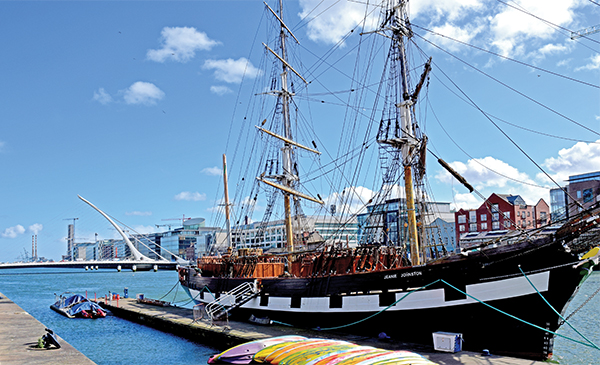
Above: Back at berth on the River Liffey.
Photo by Kevin O’Gorman.
The replica ‘famine ship,’ Jeanie Johnston, returned to her berth on the River Liffey at Customs House Quay in February, following a spell in Dublin Port’s last graving dock, where she underwent much-needed refurbishment.
The Jeanie Johnston is an authentic replica of a 19th Century three-masted barque which was built in Quebec, Canada, in 1847. Originally designed as a cargo ship, the vessel was adapted to carry passengers when demand for transport to North America and Canada increased as a result of the Potato Famine in Ireland.
From 1848 to 1855 the Jeanie Johnston carried as many as 2,500 impoverished Irish emigrants to new lives in America and Canada. Conditions on-board were basic and cramped, with each journey taking about seven weeks.
However, it is recorded that during her years of service as an emigrant ship, all the passengers made the arduous transatlantic crossing safely, with no lives lost. This is credited to the care given to the passengers by the ship’s captain, Castletownshend-born James Attridge and the ship’s doctor, Dr Richard Blennerhassett.

Pictured: Jeanie Johnston in repair at the last graving dock in Dublin Port. Photo by John McNally.
Micheál Ó Cionna, who manages the Jeanie Johnston as a tourist attraction and museum, told NewsFour that he is “delighted to have the ship back and open for business all year round.”
The Jeanie Johnston is open daily for visitors from 9.30am to 5pm.
By Jennifer Reddin



